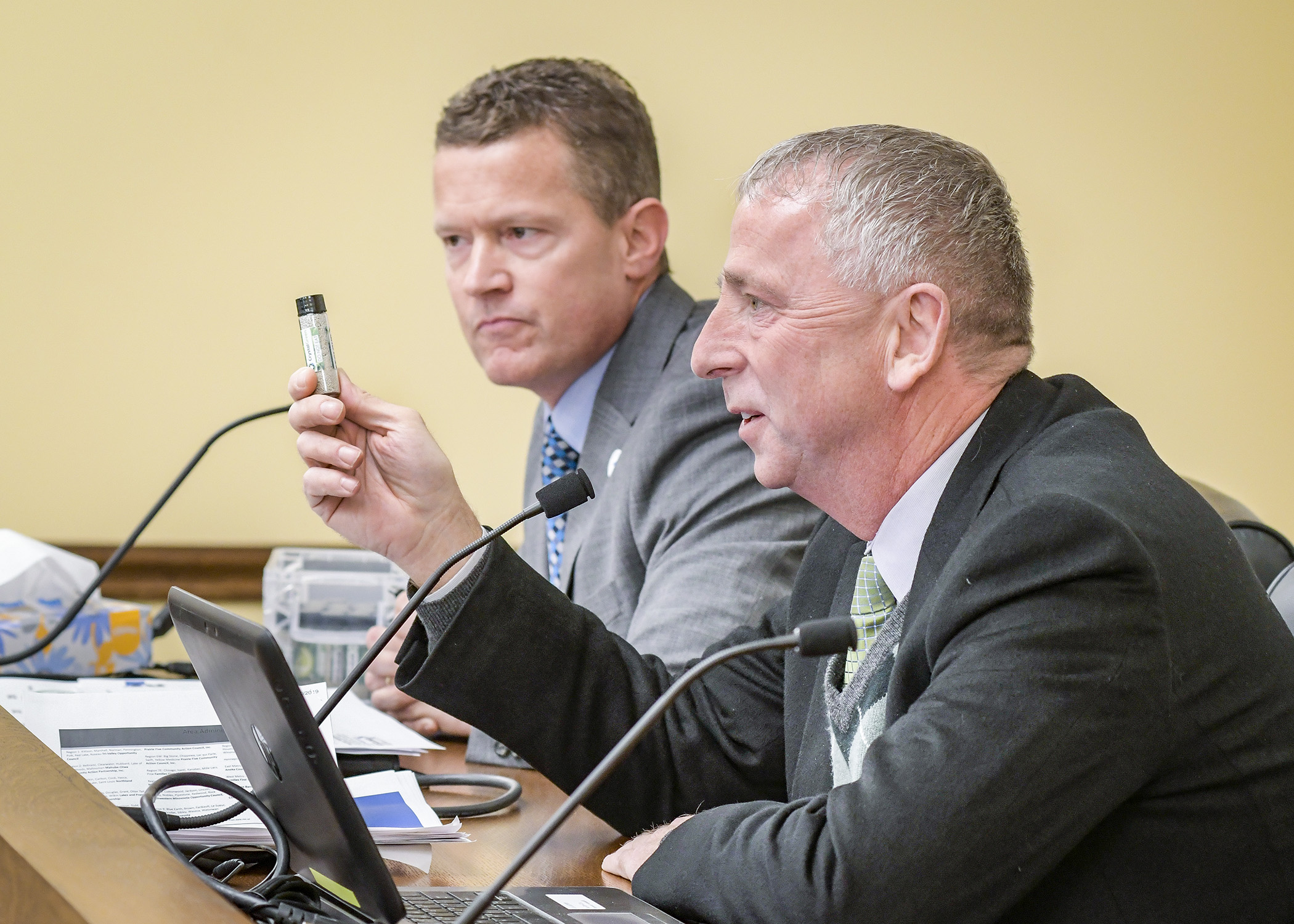Minnesota municipalities share renewable energy success stories

Zero to 60 in two years: That’s what the city of St. Cloud accomplished in its shift toward using renewable energy for city buildings.
In 2016, the city employed no solar, wind or geothermal power sources for municipal buildings. Two years later, 60 percent of its energy use was from those sources.
That was among the success stories presented to the House Energy and Climate Finance and Policy Division Thursday. St. Cloud Mayor Dave Kleis was one of five testifiers detailing how a Minnesota municipality, school district or college campus moved to renewable energy and experienced savings and other benefits.
Kleis said St. Cloud has actually been using one renewable energy source since 1970, in that it has a hydroelectric dam on the Mississippi River in partnership with Xcel Energy. In 2015, the city set a goal of getting 80 percent of its power from renewable (non-hydroelectric) power sources by 2018. It reached 64 percent, but, Kleis said, “If you count hydro, we’re at 256 percent.”
“We focused on solar,” Kleis said. “We started with some solar panels on our wastewater treatment facility and moved to all of our city buildings in St. Cloud. We’re now a net producer of energy.”
Kleis said the city also cut the cost of its street light system in half between 2016 and 2017 by switching to LED lighting, reduced natural gas use at a municipal hockey facility by 98 percent by going to geothermal energy, and has eliminated 160,000 tons of phosphorous at its wastewater treatment facility, converting some of it to fertilizer that it sells for horticultural purposes.
Kleis added that most financial risk involved in the transition has been taken on by partners, thanks to “performance contracts.”
Among others speaking of successful conversions was Michael Reese, director of the renewable energy program at the University of Minnesota West Central Research and Outreach Center. He said the University of Minnesota, Morris now derives 70 percent of its power from two wind turbines, also employing solar panels, smaller wind turbines and thermal solar systems.
And Troy Adams, general manager of Elk River Municipal Utilities, said the city went from coal-based energy to no coal by converting to diverse sources and bringing citizens’ utility rates down by 5 percent.
But some of the most compelling and colorful testimony came from Pat Collins, a life science teacher at Chisago Lakes Middle School in Lindstrom. Starting with one student’s 2008 query as to why the school couldn’t convert to solar power, Collins described an odyssey in which grants, fundraisers and falling prices resulted in a solar system atop their school by 2010. Soon, partnerships led to all five Chisago Lakes schools going solar.
“We’re saving $3 to $6 million over 30 years,” Collins said, “and that’s a lot of bake sales when you’re trying to come up with that kind of money to help schools out. And the good news is that we’ll prevent 56 million pounds of carbon dioxide from being emitted.
“We’re teaching kids that you can save a lot of money and that this is good for the environment. But, in the end, we’re teaching kids that they’re David and maybe climate change is Goliath. And that, through their actions, I think they can win.”
Rep. Pat Garofalo (R-Farmington) was skeptical about the savings.
“You say that this is saving money, but it’s not. It’s cost shifting,” he said. “This is an exceptionally expensive way to produce electricity. There are far more cost-effective ways.”
The division’s vice chair, Rep. Jamie Long (DFL-Mpls) countered that a reduction in health care costs from reduced emissions should be taken into account when examining the cost of solar.
Related Articles
Search Session Daily
Advanced Search OptionsPriority Dailies
Ways and Means Committee OKs proposed $512 million supplemental budget on party-line vote
By Mike Cook Meeting more needs or fiscal irresponsibility is one way to sum up the differences among the two parties on a supplemental spending package a year after a $72 billion state budg...
Meeting more needs or fiscal irresponsibility is one way to sum up the differences among the two parties on a supplemental spending package a year after a $72 billion state budg...
Minnesota’s projected budget surplus balloons to $3.7 billion, but fiscal pressure still looms
By Rob Hubbard Just as Minnesota has experienced a warmer winter than usual, so has the state’s budget outlook warmed over the past few months.
On Thursday, Minnesota Management and Budget...
Just as Minnesota has experienced a warmer winter than usual, so has the state’s budget outlook warmed over the past few months.
On Thursday, Minnesota Management and Budget...